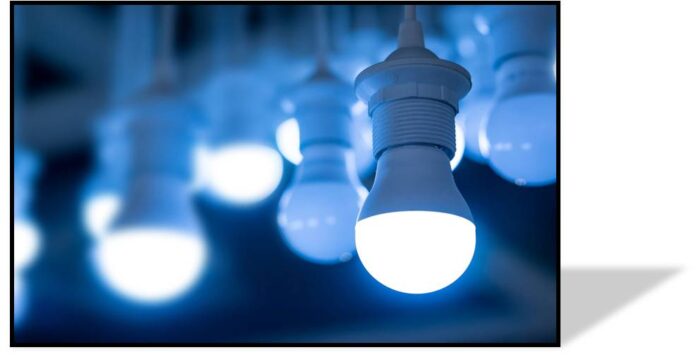LEDs (light-emitting diodes) had been the real heroes in the electronics world, but now they are emerging to take a leading role in the lighting world as well. Lighting systems from DRSA based on LEDs are extremely energy efficient. They are indeed the green devices of lighting mechanization. They not only consume less electricity but also have a very long life. This is the reason why LEDs find potential applications in a variety of display devices. Early LEDs were often used as indicator lamps, replacing small incandescent bulbs.
Recent developments have produced high-output white light LEDs suitable for room and outdoor area lighting. LEDs have led to latest displays and sensors, while their high switching rates are useful in advanced communications technology. Infrared (IR) LEDs find use in remote controls of TVs and air conditioners. Colored LEDs are used in advertisements and sign displays. They are also used to form images on a gigantic TV screen. LED rope lights and strips are an ordinary sight these days. They are used for a variety of purposes including wedding decorations, concerts, etc.
What are LEDs?
LEDs are just solid-state devices that emit light when connected to an electrical circuit. They are made of particularkinds of materials, called semiconductors.When current is passed, light is produced as the particles that carry the current (known as electrons and holes) combine within the semiconductor material.
The color emitted by an LED depends on the semiconductor material it is built of. A diode made of gallium arsenide (GaAs) emits red light while a diode made of gallium phosphide (GaP) emits green light. Using other semiconducting materials diodes emitting yellow, orange colors, etc., have also been developed.
The development of white LEDs became possible only after the invention of blue-light emitting diodes or blueLEDs. The development of a blue LED was posing difficulties. However, in 1997, blue LED was finally created, thanks to the efforts of the Japanese scientists ShujiNakamura, Isamu Akasaki, and Hiroshi Amano. They were able to create a blue LED by using gallium nitride (GaN) and indium gallium nitride (InGaN).
The creation of blue LED by the scientist- trio virtually revolutionized the field of lighting technology. It became possible to generate white light by combining the outputs from red, green, and blue LEDs. Generally, Nobel prizes are awarded for somewhat arcane and hard-to-grasp discoveries. However, the Nobel Prize Committee realized the real-world importance of this innovation and awarded the scientist-trio the Nobel Prize in Physics for the year 2014.
The history of the development of LEDs
In 1907, the British scientist Henry Joseph Round, while working as an assistant to Guglielmo Marconi in the Marconi Lab, discovered that an electric current passed through silicon carbide produces light. However, nobody took a serious note of Henry’s work. In the mid-1920s, Russian radio researcher Oleg VladimirovichLosev observed that diodes used in radio receivers emitted light when the currentwas passed through them. In 1927, Losevpublished a paper about his research in a Russian journal. Later, he also publishedthe details of his work in German and British journals.
Losev used Einstein’s new quantum theory to explain how electrons produce light without releasing heat. He also wrote a letter to Einstein asking for his help in developing the theory of LEDs. But, incidentally, he received no reply from Einstein. While no practical LED could be created out of Losev’s work, his research did pave the path for the future development of LEDs.
In 1950, British scientists using gallium arsenide developed an LED that could emit light in the infrared region of the spectrum. This may be said to be the first ever attempt to develop infrared(IR) LED. Eleven years later, in 1961, RobertBiard and Gary Pittman working with Texas Instruments invented and patented an IR LED. This was, in fact, the first LED. However, the light emitted by it is in the infrared region of the spectrum, was beyond the visible range.Biard and Pittman accidentally developed the IR LED when they were attempting to invent a laser diode.
In 1962, Nick Holonyak, a consulting engineer with General Electric Co. invented the first visible LED. Holonyakused gallium arsenide phosphide to create this LED. In 1972, electrical engineer George Crayford invented the first yellow LED for Monsanto Co. Crayford also invented a red LED that was ten times brighter than Holonyak’s.
It should be noted that Monsanto Co. was the first to mass-produce visible light LEDs. In 1968, Monsanto produced red LEDs used as indicators. But it was not untilthe 1970s that LEDs became popular when Fairchild Optoelectronics began producing low-cost LED devices.
How light-efficient are LEDs?
Light is measured in a unit called ‘lumen’. The average efficiency of an LED bulb is 100 lumens per watt (lm/W) while that of an incandescent bulb is only about 16 lm/W. The CFLs, on standard, have an efficiency of 70 lm/W.For a source of light to be 100 percent efficient it, hypothetically, needs to produce 680 lm/W. By this standard, the luminous efficiency of LEDs today is about 14.8 percent while that of the old-fashioned incandescent bulbs is around 2.3 percent. The luminous efficiency of CFLs varies between the previous two figures at approximately 10.3 percent. Since the LED technology is constantly undergoing improvement, it is only expected that in the future we would be able to achieve even higher luminous efficiency.
Credentials of LEDs
The most important credential of LEDs is that they are highly energy-efficient as they consume very little power. The greatsecret of energy efficiency exhibited byLEDs lies in the fact that they producelight directly without having to passthrough an intermediate stage. In other sources of man-made light, only a fraction of electrical energy is converted into light. For instance, in the case of incandescent bulbs, electrical energy is first converted to heat energy to heat the filament, which subsequently emits light. About 90 percent of the energy goes intoheating the filament and only 10 percent is converted to light.
In the case of fluorescent tubes or compact fluorescent lamps (CFLs), the electrical energy is first used to ionize a gas, which subsequently produces light by fluorescence of a special material (called phosphor) that is coated on the inside of the tube or CFL. However, LEDs neither have a filament nor a gas; they function solely through the movement of electrons through semiconducting materials.
So, LEDs are more energy-efficient and emit brighter light compared to other artificial light sources. Also, they are long-lasting. They can last for 1,00,000 hours or more. That means if you buy an LED today, you would need to throw it after using it for more than 25 years! Sounds incredible but true.The Calculation is simple: there are 365 days in a whole year and normally a bulb is used for 10 hours a day in an average household. Compared to an LED bulb, an incandescent bulb lasts for only 1,000 hours and a CFL for around 8,000 hours.
However, LED bulbs present a high up-front cost compared to incandescent bulbs or CFLs. But, in the long run, they indeed prove cost-effective by saving a lot of energy. The worldwide thrust, therefore, is to use LEDs for general lighting purposes. Statistics show that about one-fourth of global electricity consumption is used for lighting purposes.
Because of very low power requirements, LEDs can effectively be powered by solar panels. This has great potential of benefitting 1.5 billion people acrossthe globethat lack access to electricity grids.
New types of LEDs
As LED technology continues to evolve, new types of LEDs are being developed to meet specific needs, resulting in a growing range of LED types such as Standard LEDs, High-power LEDs, RGB LEDs, Organic LEDs, LED Strip Lights, and LED Panel Lights with varying capabilities and applications. These all come in various types based on their designs, applications, and technology.
These LEDs produce a yellow hue, close to that produced by incandescent bulbs. They produce less glare and work more efficiently in fog. Also, they give an aesthetic look. Warm-white LEDs were initially started in Korea and Malaysia not a very long time ago. But, now they are being used in other countries as well. In India, warm-white LEDs are being used to give aesthetic look to round abouts, parks, and fountains in New Delhi.
Potential health risks of LEDs
It has been found that LEDs might affect your eye, particularly the health of the retina. This might sound unbelievable, but some studies indicate that the risk cannot be ruled out either. The latest to raise the red flag is the French Agency for Food, Environmental and Occupational Health & Safety (ANSES), the country’s government-run health watchdog. In a 400-page report, it has been stated that the blue light in LED lighting can damage the retina. “Exposure to an intense and powerful (LED) light is ‘photo-toxic’ and can lead to irreversible loss of retinal cells and diminished sharpness of vision,” said the report.
Like most other countries, LEDs areused widely in our country, both outdoors and indoors. LEDs with high intensity are also increasingly being used in automobile headlights.
Although LEDs are energy efficient, they produce more blue light compared to the old-fashioned incandescent bulbs. According to eye specialists, theoretically LED lights have the potential to damage retinal cells. However, they say that there is a need for large-scale clinical studies to determine the intensity and duration of such exposures that can be damaging. “Conclusive data is needed before raising an alarm”, they say.
Another area of concern is the marked constant flicker and glare in LED lights. Most LEDs available in India have high flicker rates not suitable for overall eye health. Some studies point out that the factors that make flicker worse include longer duration of exposure, greater area of retina receiving stimulation, greater brightness of the flash, and its higher contrast with surrounding luminance.
Artificial lighting is an integral part of our everyday life. We spend anstandard of 10-12 hours under these lights. It is, therefore, important that LED lights need the photobiological safety standards prescribed internationally. The issues of flicker and glare are associated with poorly manufactured LEDs.
The issues of eye health, particularly the health of the retina are associated with LEDs. However, there is no conclusive evidence yet that LEDs do hurt the retina. It may be relevant to mention that last year (2018) the European Commission had stated that there is no evidence that the normal usage of LEDs can adversely affect the health of common people. In its statement, the Commission also pointed out: “However, there is insufficient research on the health effects of LED lighting and many topics should be investigated further, particularly the effects of flicker.”
Author: Rajat Manro
Write and Win: Participate in Creative writing Contest & International Essay Contest and win fabulous prizes.










